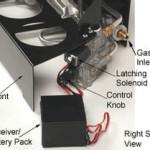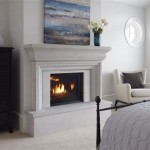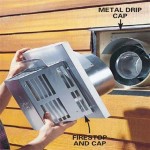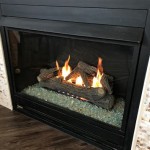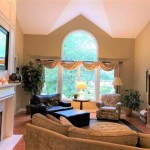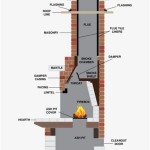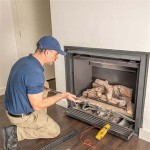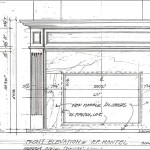Portable Outdoor Fireplaces: Wood Burning Options for Enhanced Outdoor Living
Portable outdoor fireplaces offer a compelling blend of functionality and aesthetics, allowing individuals to extend the usability and enjoyment of their outdoor spaces well beyond the typical summer months. The allure of a crackling wood fire, combined with the convenience of portability, makes these fireplaces a popular choice for patios, decks, camping trips, and various other outdoor settings. This article will delve into the features, benefits, and considerations associated with portable wood-burning outdoor fireplaces, providing a comprehensive overview for potential users.
The core concept behind a portable outdoor fireplace lies in its ability to be easily transported and set up in different locations. Unlike traditional built-in fireplaces, these units are designed for movement, offering flexibility in positioning and storage. This portability opens up a range of possibilities for outdoor entertaining and relaxation, allowing users to create a cozy atmosphere wherever they choose.
Construction materials for portable wood-burning fireplaces vary, but common choices include steel, cast iron, and copper. Steel offers a good balance of durability and affordability, while cast iron is known for its exceptional heat retention capabilities. Copper, although more expensive, provides a visually appealing aesthetic and excellent corrosion resistance. The choice of material will influence the fireplace's weight, longevity, and overall performance.
Safety is paramount when operating any wood-burning appliance, and portable outdoor fireplaces are no exception. Users must adhere to safety guidelines and regulations to minimize the risk of fire hazards. Proper clearance from flammable materials, the use of spark screens, and responsible handling of ashes are crucial aspects of safe operation.
Understanding the Benefits of Portable Wood-Burning Fireplaces
The advantages of owning a portable wood-burning fireplace are numerous, extending beyond mere aesthetics. These benefits contribute to a more enjoyable and versatile outdoor living experience.
Firstly, the ambiance created by a wood-burning fire is unparalleled. The sights, sounds, and smells of a crackling fire evoke a sense of warmth and relaxation, fostering a cozy and inviting atmosphere. This makes portable fireplaces ideal for social gatherings, quiet evenings alone, or simply enjoying the beauty of the outdoors.
Secondly, portable fireplaces provide a source of heat, extending the comfortable outdoor season. As temperatures drop in the evenings or during cooler months, the radiant heat from the fire allows individuals to continue enjoying their patios, decks, or campsites. This extended usability can significantly enhance the value and enjoyment of outdoor spaces.
Thirdly, the portability aspect allows for greater flexibility in outdoor design and usage. Unlike fixed fireplaces, portable units can be moved to different locations as needed, accommodating various layouts and activities. This adaptability makes them suitable for a wide range of outdoor settings and occasions.
Finally, many models can be used for cooking. While not their primary function, some portable fireplaces come equipped with cooking grates or accessories, allowing users to grill food or prepare simple meals over an open flame. This added functionality enhances their versatility and appeals to those who enjoy outdoor cooking.
Beyond these core benefits, some portable fireplaces also offer unique features, such as built-in storage for firewood, adjustable vents for controlling airflow, and decorative elements that enhance their visual appeal.
Key Considerations When Selecting a Portable Wood-Burning Fireplace
Choosing the right portable wood-burning fireplace requires careful consideration of several factors, ensuring that the selected unit meets the user's specific needs and preferences. These considerations include size, construction material, safety features, and intended use.
Firstly, size is a crucial factor. The appropriate size will depend on the size of the intended outdoor space and the desired level of heat output. A larger fireplace will generate more heat, but it will also be heavier and more difficult to transport. Smaller units are more portable but may not provide sufficient heat for larger areas.
Secondly, the construction material plays a significant role in the fireplace's durability, heat retention, and aesthetics. Steel is a cost-effective and durable option, while cast iron offers superior heat retention. Copper provides a visually appealing and corrosion-resistant alternative. The user should weigh the pros and cons of each material based on their budget, aesthetic preferences, and expected usage conditions.
Thirdly, safety features are paramount. The fireplace should include a spark screen to prevent embers from escaping and potentially igniting nearby materials. A sturdy base is also essential to ensure stability and prevent tipping. Consider models with features such as heat-resistant handles and built-in ash catchers for added convenience and safety.
Fourthly, consider the intended use of the fireplace. If it will primarily be used for camping, a lightweight and easily transportable model is desirable. If it will primarily be used on a patio or deck, a larger and more aesthetically pleasing unit may be preferred. If cooking is a priority, ensure that the fireplace is equipped with appropriate cooking grates or accessories.
Fifthly, research and compare different models from reputable manufacturers. Read online reviews and consult with experts to gain insights into the performance and reliability of various options. Consider factors such as warranty coverage and customer support.
Finally, consider complying with local regulations and restrictions concerning outdoor wood-burning appliances. Some municipalities may have limitations on the types of fireplaces allowed, the hours of operation, or the types of fuel that can be used. It is the user's responsibility to ensure compliance with all applicable regulations.
Safe Operation and Maintenance of Portable Wood-Burning Fireplaces
Proper operation and maintenance are essential for ensuring the safe and efficient use of a portable wood-burning fireplace. Following established guidelines and performing regular maintenance can extend the lifespan of the unit and minimize the risk of accidents.
Firstly, always operate the fireplace on a level and stable surface, away from flammable materials. Maintain a safe clearance distance between the fireplace and any structures, foliage, or other combustible items. Consult the manufacturer's instructions for recommended clearance distances.
Secondly, use only seasoned firewood. Green or wet wood produces excessive smoke and creosote, which can increase the risk of chimney fires. Seasoned wood burns more cleanly and efficiently, producing more heat and less smoke.
Thirdly, never leave the fireplace unattended while it is burning. Keep a close eye on the fire and ensure that it is properly contained within the firebox. Have a fire extinguisher or a bucket of water readily available in case of emergencies.
Fourthly, use a spark screen at all times to prevent embers from escaping. Regularly inspect the spark screen for damage and replace it if necessary.
Fifthly, allow the ashes to cool completely before disposing of them. Never dispose of hot ashes in a trash can or any other combustible container. Place the cooled ashes in a metal container with a tight-fitting lid and store it away from flammable materials.
Sixthly, regularly clean the fireplace to remove accumulated ash and creosote. Creosote buildup can increase the risk of chimney fires. Consult the manufacturer's instructions for recommended cleaning procedures.
Seventhly, inspect the fireplace regularly for signs of damage or wear. Check for cracks, rust, or loose components. Repair or replace any damaged parts promptly.
Eighthly, properly store the fireplace when it is not in use. Store it in a dry and protected location to prevent rust and corrosion. Cover the fireplace with a waterproof cover to protect it from the elements.
By following these safety and maintenance guidelines, users can ensure the safe and enjoyable operation of their portable wood-burning fireplaces for years to come.

The 10 Best Portable Fire Pits Of 2024 Wood Burning

10 Outdoor Fireplace Ideas You Ll Want To Copy Bob Vila

Endless Summer 45 In H Steel Wood Burning Outdoor Fireplace With Chimney And Included Grate Cooking Waf1013c The Home Depot

7 Best Wood Stoves In 2024 Our Top Picks

Deko Living 39 37 In W Brown Iron Wood Burning Fire Pit The Pits Department At Com

Outdoor Wood Burners Fireplace Bakewell

The Best Outdoor Fireplaces In 2024 For Outside

9 Outdoor Fireplace Design Ideas The Family Handyman

How To Choose An Outdoor Fireplace The Home Depot

Modern Outdoor Fireplaces And Fire Pits That You D Be Proud To Have In Your Backyard

